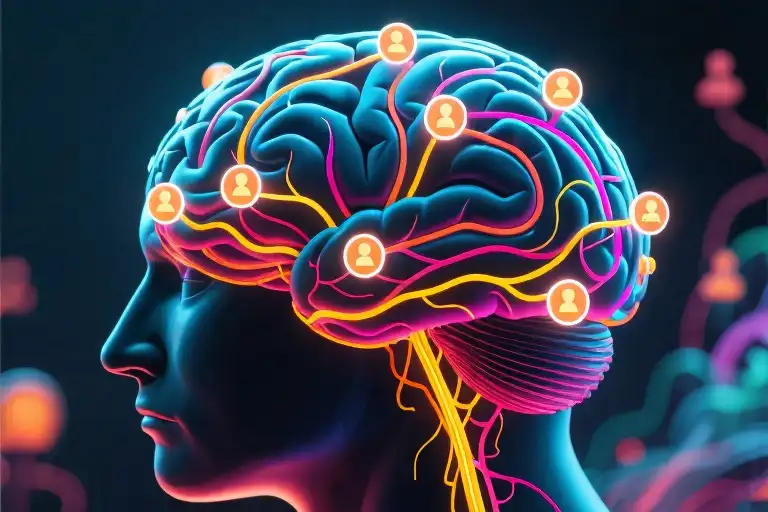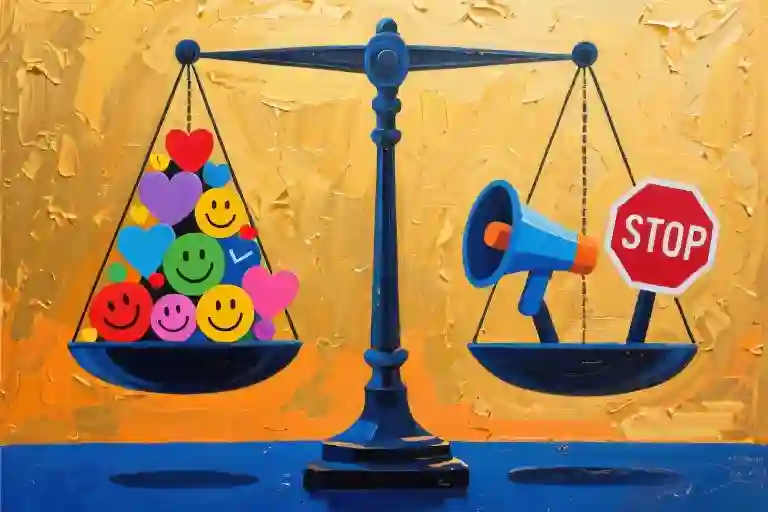We’ve all grown up consuming the same fairy-tale version of love. From Disney princesses to Hollywood rom-coms, we’re fed this narrative that love should be effortless, magical, and perfectly scripted. The right person will complete you, understand you without words, and never disappoint you. But here’s the uncomfortable reality no one talks about at the movies: real love isn’t built on fantasies—it’s shaped by truth.
Think about your last few relationships. That pattern you can’t seem to break. The same arguments with different faces. The partners who somehow always end up displaying similar frustrating traits. You might call it bad luck or blame the dating pool, but what if I told you there’s a deeper reason you keep attracting these experiences?
The hard truth about love—the one that might initially piss you off before it liberates you—is that your relationships are mirrors. They reflect back what you haven’t yet healed within yourself. That woman who’s always creating drama? The partner who can’t commit? The emotionally unavailable dates? They’re not random misfortunes—they’re signposts pointing to your own unmet needs, unresolved wounds, or unintegrated shadows.
Consider this: Men who consistently attract chaotic partners often haven’t mastered their own chaos. Those who complain about ‘difficult women’ might secretly crave the intensity that comes with unpredictability because it distracts from their own internal work. As psychologist Carl Jung famously said, ‘Everything that irritates us about others can lead us to an understanding of ourselves.’
This isn’t about blame—it’s about empowerment. Recognizing these patterns is the first step toward breaking cycles of bad relationships. Over the next sections, we’ll explore eight transformative truths about love that most people resist hearing (but wish they’d learned sooner). These insights will help you:
- Identify your unique relationship patterns psychology
- Understand why you attract certain partner types (and how to shift it)
- Develop masculine emotional growth strategies
- Move from fantasy to fulfilling, authentic connections
Warning: Some of these truths will sting. They’ll challenge stories you’ve told yourself for years. But as any man who’s transformed his love life will tell you—the most painful realizations often lead to the most powerful breakthroughs.
Let’s begin with the most paradigm-shifting truth of all: Your dating history isn’t about them. It’s about you.
The Attraction Trap: Why You Keep Choosing Wrong Partners
We’ve all been there—that moment when you realize you’re dating the same type of person again, just with a different face. The arguments feel familiar, the frustrations identical, and the breakup script plays out like a rerun of last season’s drama. Before blaming bad luck or ‘all women being crazy,’ let’s examine the uncomfortable mirror your relationships hold up to your inner world.
3 Relationship Patterns That Keep You Stuck
- The Rescuer Syndrome
You’re drawn to partners who ‘need fixing’—the emotionally unavailable, the chronically struggling, or those with obvious baggage. This pattern often stems from:
- Childhood experiences where love was conditional on caretaking
- Using others’ problems to avoid addressing your own
- Mistaking drama for passion
Quick check: Do you feel most needed (not necessarily valued) in relationships?
- The Chaos Addict
Your relationships follow a rollercoaster cycle: intense highs, explosive lows, and brief periods of uneasy calm. This could indicate:
- An unconscious recreation of childhood emotional environments
- Using conflict to manufacture intensity (mistaking it for connection)
- Fear of true intimacy hiding behind the smoke of arguments
Quick check: Do peaceful relationships eventually feel ‘boring’ to you?
- The Shadow Seeker
You consistently attract partners who exhibit traits you deny in yourself—aggression if you suppress anger, neediness if you disdain vulnerability. Psychology calls this projection:
- We reject aspects of ourselves, then magnetize people who embody them
- These relationships become live demonstrations of your inner conflicts
Quick check: Do your partners’ ‘worst traits’ seem like exaggerated versions of qualities you dislike about yourself?
Self-Assessment: Is Your Picker Broken?
Answer these honestly (no one’s watching):
- When listing exes, do they share strikingly similar negative traits?
□ Yes □ No - Do friends/family gently suggest you have a ‘type’ (in a concerned tone)?
□ Yes □ No - Have multiple partners accused you of the same behavior?
□ Yes □ No - Do you often think, “If only they changed _, we’d be perfect”?
□ Yes □ No - Have you ever felt relieved after a breakup, then repeated the same choice?
□ Yes □ No
Mostly ‘Yes’? You’re likely stuck in an attraction loop. The good news? Awareness is step one toward breaking it.
Why This Keeps Happening
Attraction isn’t random—it’s your subconscious running a sophisticated matching program:
- Emotional Familiarity: We equate ‘chemistry’ with childhood relationship templates, even unhealthy ones
- Unfinished Business: Unresolved wounds seek healing through repetitive scenarios
- Self-Concept Mirror: You attract partners who reflect your deepest beliefs about love and yourself
As relationship expert Ken Page observes: “Our attractions are not accidents. They are precise, subconscious homing devices for our deepest unmet emotional needs.”
The Way Forward
Recognizing these patterns isn’t about self-blame—it’s about empowerment. In the next section, we’ll explore how to:
- Identify your specific attraction triggers
- Interrupt automatic dating behaviors
- Cultivate magnetism toward healthier partners
For now, sit with this question: What would it mean if your relationship struggles weren’t about them, but about becoming the man who no longer fits those old patterns?
The Mirror of Attraction: What Your Partners Reveal About You
Relationships act as mirrors, reflecting back the parts of ourselves we often fail to see. The partners we attract aren’t random occurrences – they’re living indicators of our emotional maturity, unresolved wounds, and deepest insecurities. This uncomfortable truth forms the foundation for breaking destructive relationship patterns.
The People You Attract Reflect Your Inner Landscape
That ‘difficult’ partner you can’t seem to avoid? They’re showing you something crucial about yourself. Psychological research confirms we unconsciously seek partners who complement our emotional state. An anxious person attracts avoidant partners. Someone with unhealed childhood wounds often finds themselves with emotionally unavailable lovers.
Consider Jason’s story: “I kept dating women who needed ‘fixing’ – addicts, emotionally damaged, financially irresponsible. My therapist helped me see I was recreating my relationship with my depressed mother.” His pattern only shifted when he addressed his childhood role as family caretaker.
Complaining About Your Partner = Denying Your Shadow
Every trait that frustrates you in a partner likely points to a disowned part of yourself. This psychological phenomenon, called projection, explains why we react so strongly to certain behaviors. That partner who’s ‘too needy’? Might reflect your own unacknowledged dependency. The one who’s ’emotionally cold’? Could mirror how you disconnect from feelings.
Try this exercise:
- List 3 traits that bother you in partners
- Ask: “When have I displayed this behavior?”
- Note any defensive reactions – these signal important blind spots
The Paradox of Craving Peace But Choosing Chaos
Many men genuinely desire tranquil relationships yet consistently pick turbulent partners. Neuroscience reveals this isn’t coincidence – we’re wired to seek familiar emotional patterns, even painful ones. If childhood involved unpredictability, adult brains may misinterpret chaos as ‘passion’ and stability as ‘boring.’
Breaking this cycle requires:
- Recognizing your ‘comfort zone’ of emotional intensity
- Retraining your nervous system through calm relationships
- Understanding that initial ‘spark’ often signals unhealthy chemistry
Unresolved Trauma Echoes Through Generations
Those childhood wounds you never addressed? They’re likely influencing your partner selection more than you realize. Attachment theory shows we unconsciously recreate early caregiving dynamics. A man with a critical father may attract judgmental partners until he heals that wound.
Three signs of generational trauma in relationships:
- Repeating specific arguments your parents had
- Feeling ‘stuck’ in familiar negative dynamics
- Partners frequently commenting on patterns you don’t see
The path forward isn’t about blaming parents, but breaking cycles through awareness and new emotional experiences.
Practical Steps Toward Healthier Attraction
- Pattern Mapping
- Chart your last 3 serious relationships
- Note similarities in partners’ behaviors and your reactions
- Emotional Archaeology
- Journal about childhood relationship models
- Identify parallels to current patterns
- Conscious Repatterning
- When drawn to familiar ‘type,’ pause and assess
- Gradually spend time with emotionally available people
Remember: Lasting change comes from compassionate self-awareness, not self-criticism. Your relationship patterns developed for survival – honor that, then choose to grow beyond them.
The Uncomfortable Truths About Relationships
We’ve all been sold the fantasy that love should be effortless – that when you meet ‘the one,’ everything magically falls into place. But here’s truth #5 that might sting: Real love requires active effort, not just passive feelings. The healthiest relationships I’ve seen aren’t those without problems, but where both partners choose to work through them daily.
Truth #5: Love Is a Verb, Not Just a Feeling
That initial spark? It’s biology. What comes after? That’s choice. Studies show couples who view love as an ongoing action (rather than permanent state) have 67% higher relationship satisfaction. Try this reframe:
- Instead of “We fell out of love” → “We stopped choosing each other”
- Instead of “They should just know” → “Am I clearly communicating my needs?”
Keyword integration: This aligns with search queries like “how to make love last” and “active relationship maintenance.”
Truth #6: Boundaries Are Love’s Unsung Heroes
Many men confuse ‘nice guy’ behavior with being loving. But truth #6 reveals: Healthy relationships require clear boundaries, not endless compromise.
Example: You might think canceling guys’ night whenever she’s upset proves your commitment. Actually, it often breeds resentment on both sides. Try instead:
- “I care about your feelings AND need time with friends”
- Schedule check-ins if she struggles with anxiety
- Gradually build trust through consistency
Psychology tie-in: Research shows people with strong personal boundaries report 40% less relationship conflict.
Truth #7: Conflict Is Your Relationship Gym
Here’s truth #7 that flips the script: Arguments aren’t relationship failures – they’re growth opportunities. The key difference? Toxic fights attack character (“You’re so selfish!”), while healthy conflicts address behavior (“When X happens, I feel Y”).
Try this framework next time tensions rise:
- Pause (Take 20 mins if flooded)
- Pinpoint (Specific issue, not global blame)
- Problem-solve (“How can we both win?”)
SEO note: This answers searches like “how to fight fair in relationships” and “constructive conflict resolution.”
Truth #8: The Only Person You Can Change Is You
The hardest truth? You’ll never argue someone into changing. But here’s the hopeful part: When YOU shift behaviors, the relationship dynamic transforms.
Case study: David kept attracting critical partners. When he:
- Stopped self-deprecating humor (inviting criticism)
- Set firmer work boundaries (no longer resenting “nagging”)
- Owned his emotional needs directly
…His next relationship had completely different energy.
Action step: For one week, track what YOU’RE doing when relationship patterns repeat. Not what they’re doing – your half of the dance.
Bringing It All Together
These truths aren’t meant to discourage, but to empower. When you:
- Accept love takes work (truth #5)
- Set kind boundaries (truth #6)
- Reframe conflict (truth #7)
- Focus on self-change (truth #8)
…You stop chasing fantasy relationships and start building real ones. As we often say: “The relationship you want is on the other side of the person you become.”
Next steps: Try just ONE insight this week. Maybe noticing your conflict style (truth #7) or practicing “I choose” language (truth #5). Small shifts create big changes over time.
Action Guide: 3 Steps to Reshape Your Attraction Patterns
Now that we’ve uncovered the hard truths about why you keep attracting the wrong partners, it’s time to put this awareness into action. Real change happens when insight meets consistent practice. These three steps will help you break free from destructive dating patterns and start attracting healthier relationships.
Step 1: Relationship Pattern Analysis
Before you can change your attraction blueprint, you need to understand it. This isn’t about blaming yourself or past partners—it’s about recognizing the invisible forces shaping your love life.
Exercise: Create a relationship map for your last 3 significant partners:
- List each person’s dominant emotional traits (e.g., “needy,” “distant,” “volatile”)
- Note what initially drew you to them
- Identify the relationship’s emotional temperature (chaotic? stable? unpredictable?)
- Mark how you typically responded to conflicts
Key Insight: Look for the common thread. As one client realized, “I kept attracting emotionally unavailable women because that’s how I learned to connect growing up—always chasing affection.”
Step 2: 7-Day Emotional Trigger Journal
Your attraction patterns are wired to emotional experiences. This week-long practice will reveal your hidden triggers:
Daily Practice:
- Morning: Set an intention (e.g., “Notice when I feel unworthy”)
- Throughout day: Record moments when you feel:
- Defensive
- Overly eager to please
- Withdrawn
- Unusually irritated
- Evening: Reflect on what triggered these states
Pro Tip: The situations that trigger strong reactions often point to unhealed wounds influencing your partner choices.
Step 3: Self-Talk Rewiring Exercises
The stories you tell yourself shape who you attract. Try these powerful reframes:
Replace: “I need someone to complete me”
With: “I choose partners who complement my wholeness”
Replace: “Why does she always start fights?”
With: “What part of me is reacting to this dynamic?”
Daily Affirmation:
“I attract relationships that mirror my commitment to growth. My peace isn’t dependent on someone else’s behavior.”
Bonus Practice: When old patterns surface, pause and ask:
- What emotion am I feeling?
- When have I felt this before?
- What’s a healthier way to meet this need?
Remember: Reshaping your attraction patterns isn’t about becoming someone new—it’s about uncovering the most authentic version of yourself that naturally draws healthy love.
From Fantasy to Awakening
We’ve traveled through some uncomfortable truths together in this guide. If you’re feeling unsettled, that’s completely normal. Growth begins exactly where comfort ends. The fairytale version of love we’ve been sold does more harm than good—it sets us up for disappointment by making us believe relationships should be effortless.
Here’s what we’ve uncovered:
- Your relationships mirror your inner world – The partners you attract aren’t random; they reflect your unresolved issues and unmet needs
- Complaints reveal your shadows – Every trait that frustrates you in others points to something you deny in yourself
- Chaos is a choice – If you keep attracting drama, part of you is still addicted to emotional intensity
- Love is a skill – Lasting connections require conscious effort, not just chemistry
Your Next Steps
This knowledge means nothing without action. Here’s how to start applying it today:
- Complete the 7-Day Relationship Audit (download the PDF template from the link below)
- Track your emotional triggers
- Identify repeating arguments
- Note when you feel “she’s the problem”
- Rewrite Your Attraction Patterns
- Take 10 minutes to answer: “What did my most difficult relationships teach me about myself?”
- For one week, replace “Why does she…” with “Why do I react when…”
- Share Your Insights
- Text one friend this article with your biggest takeaway
- Join our private forum (link in bio) to discuss with men on the same journey
The Journey Continues
Remember what we said earlier? “A man who finds himself with chaotic women hasn’t done the hard work of mastering himself.” Now you know exactly what that work looks like.
Next week, we’ll dive deeper into how to recognize a partner’s hidden patterns before committing. You’ll learn:
- The 3 subtle signs someone hasn’t done their emotional work
- How to spot childhood wounds masquerading as personality traits
- Why your “gut feeling” sometimes lies (and how to recalibrate it)
Until then, keep this in mind: Real love doesn’t complete you—it meets you where you’ve already begun completing yourself.
“The quality of your life eventually comes down to the quality of the questions you’re willing to ask yourself.”
— Mark Manson
[Download your Relationship Audit Template here] | [Join Our Men’s Growth Forum]





